The Alpe-Adria Trail is Europe’s newest long distance hiking route and runs for 750km from the foot of the Grossglockner (at 3,798m Austria’s highest mountain), into Slovenia and ends in Italy, near Trieste on the Adriatic coast.
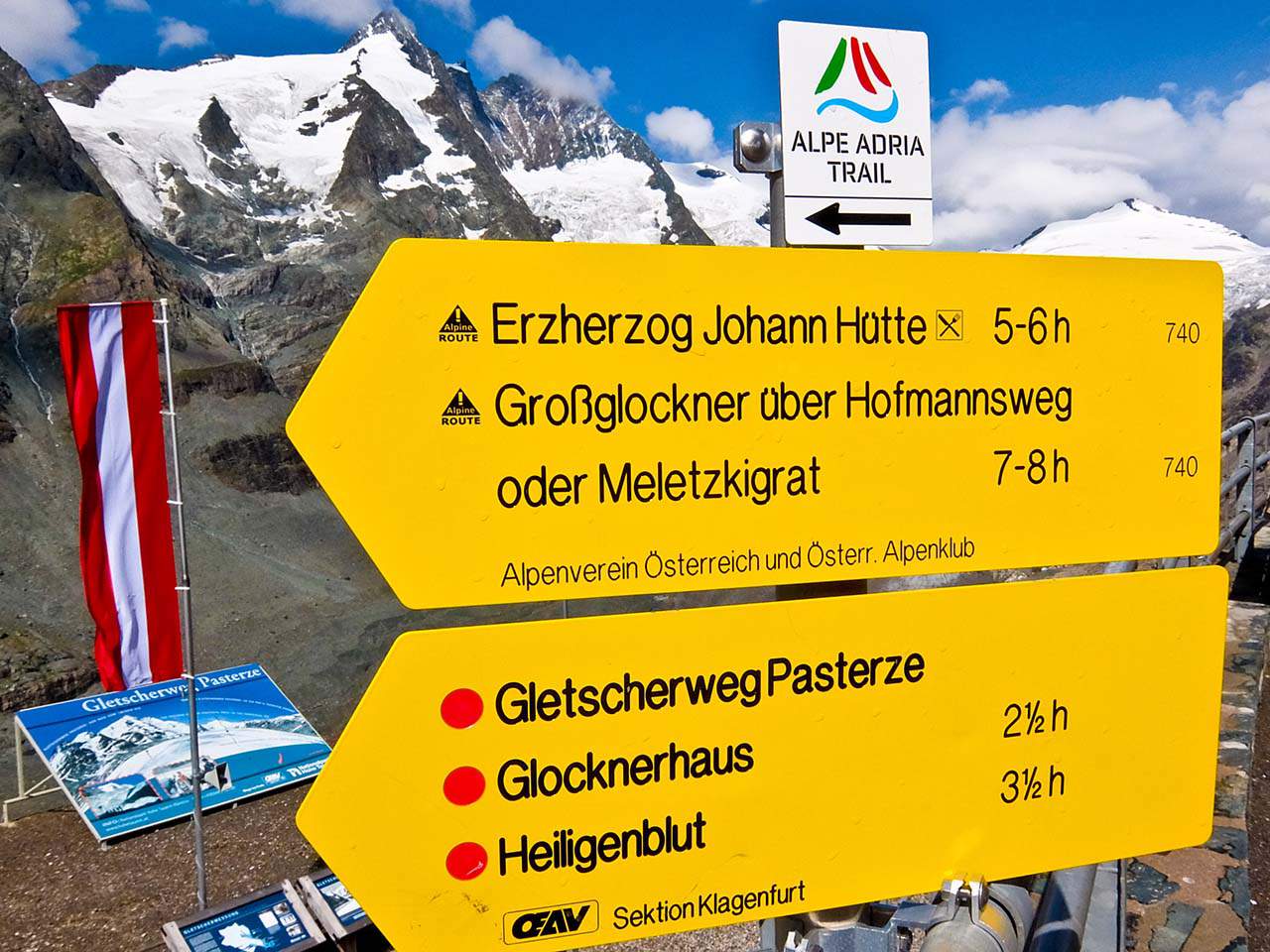
Alpe Adria – Signpost at the Pasterze Glacier, Austria (c) Rupert Parker
It’s divided into 37 daily stages, each around 20 km, although it’s possible to do the whole lot in a month it is better to do it in sections – Austria has 22 stages, Slovenia has five and the last ten mix Slovenia and Italy. There’s also a Circular Route which connects Austria, Italy and Slovenia in seven days.
I’ve only got eight days, so decide to sample the most interesting bits. I start at the beginning in Carinthia, Austria and catch the post bus from Heiligenblut up to Kaiser-Franz-Josefs-Höhe, a short 30 minute journey. There had been thunderstorms overnight and dusted the Grossglockner with a covering of snow.
Pasterze Glacier, Austria
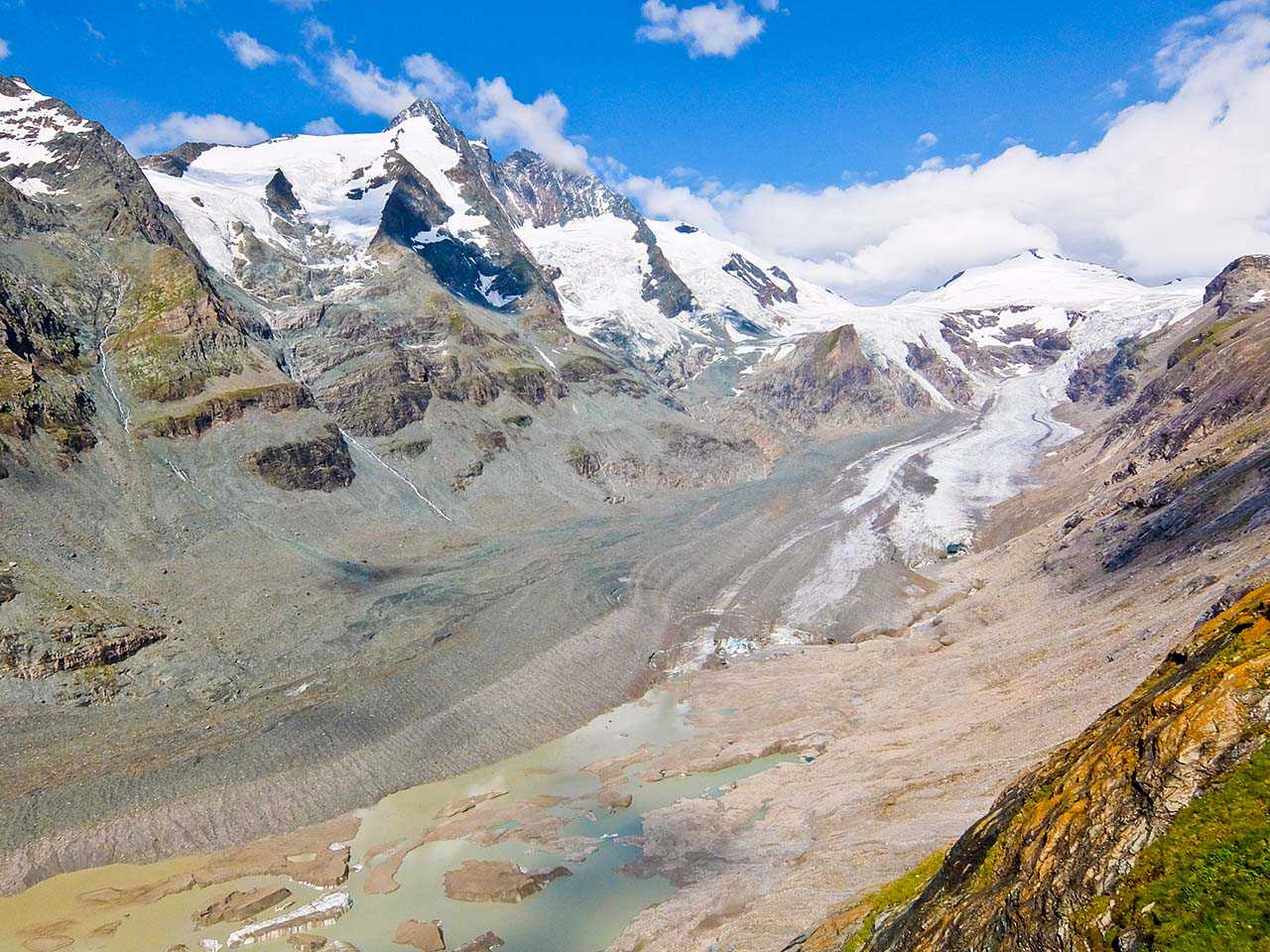
Pasterze Glacier, Austria (c) Rupert Parker
The Pasterze Glacier, the longest in the Eastern Alps, gleams in the morning sunlight and my first steps on the trail are down a steep path to the Sandersee, filled with meltwater. The path is well marked and, after crossing another lake, the Margaritze Stausee, I’m back in the valley approaching Heiligenblut, my starting point. It’s taken me around five hours and has been a pleasant morning’s walk.
I’m now transferred by taxi to Mallnitz from where I tackle Stage 7 next day.
Groppensteinschlucht gorge, Austria
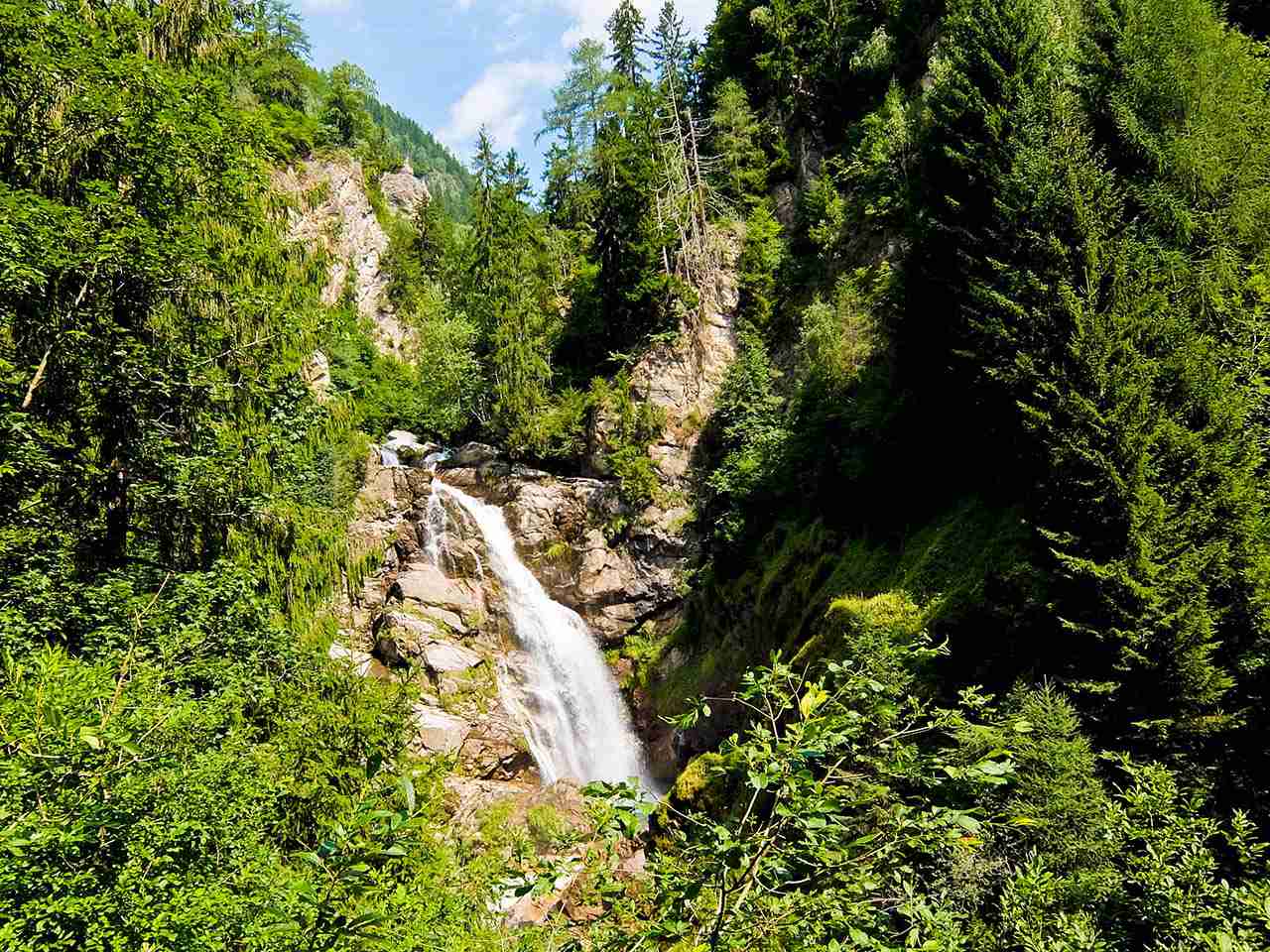
Rabischschlucht Gorge Waterfall, Austria (c) Rupert Parker
The trail follows the Mallnitzbach stream as it plunges through the Rabischschlucht gorge in a series of waterfalls. It’s pleasant underfoot and I have the trail all to myself. That changes as I enter the adjacent Groppensteinschlucht gorge, a popular route for day trippers. There’s an entrance fee, and I’m going in the opposite direction to most people. They’re certainly not friendly and don’t return my greetings. One person even tries to tell me it’s one way only.
The walls of this gorge are much steeper than the previous one and a system of walkways has been grafted onto the rock so you’re suspended in mid-air for most of the journey. You don’t really need a head for heights but two old men tell me at the top that it’s too dangerous to proceed. I think they’re rather over estimating the danger and there are stunning views of the various waterfalls.
Danielsberg Hill, Austria
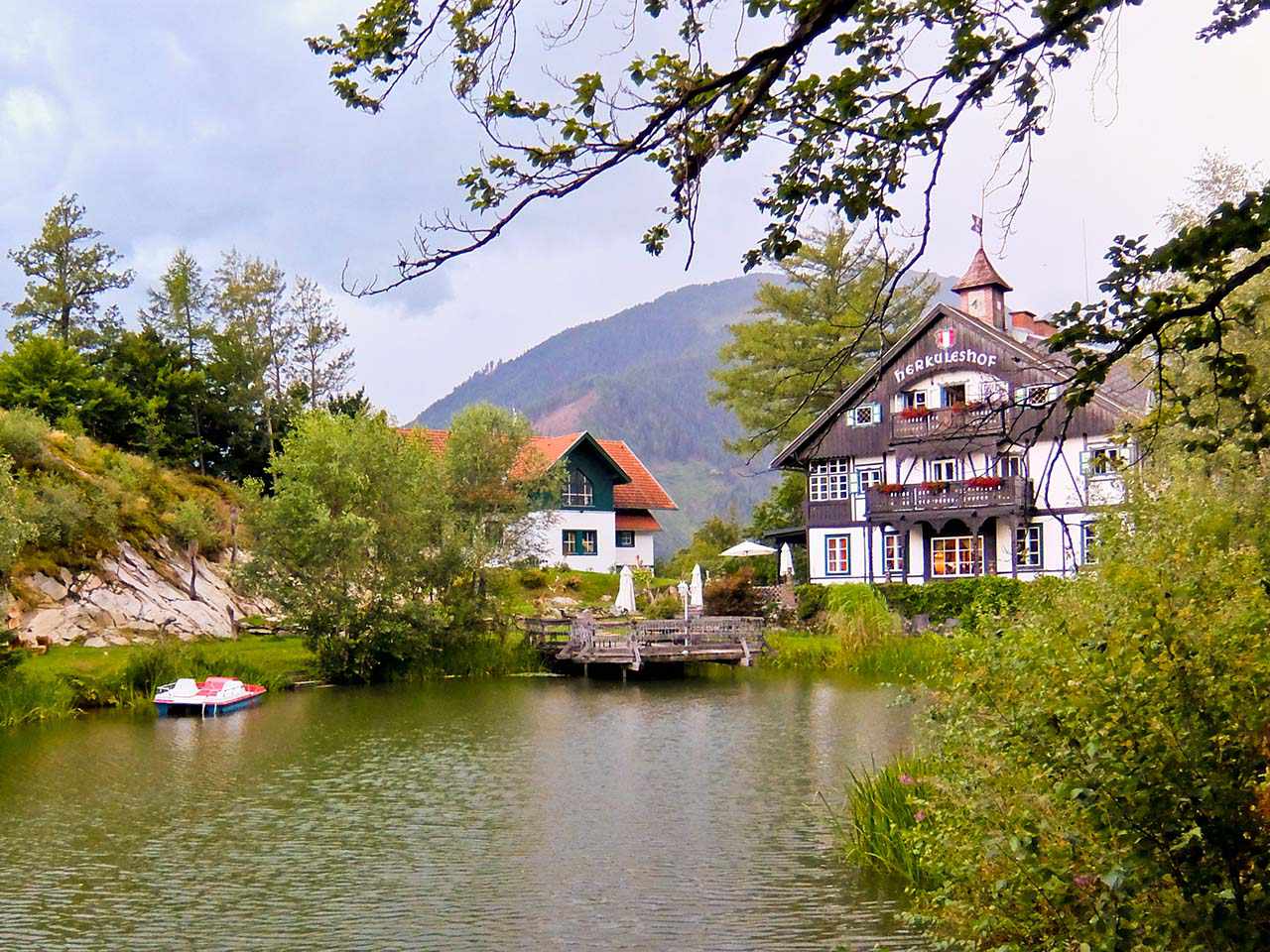
Herkuleshof, Austria (c) Rupert Parker
The stage ends in the village of Obervellach, but I plough on, climbing up the side of the Möll valley to an almost perfectly conical hill, the Danielsberg. It’s been a sacred site for over 6000 years, first for the Celts, then the Romans and the Catholic Church of St. George dates back to the 12th century. My pilgrimage ends in the Herkuleshof, originally a 19th century hunting lodge but now a charming inn with excellent food.
Valbruna, Italy
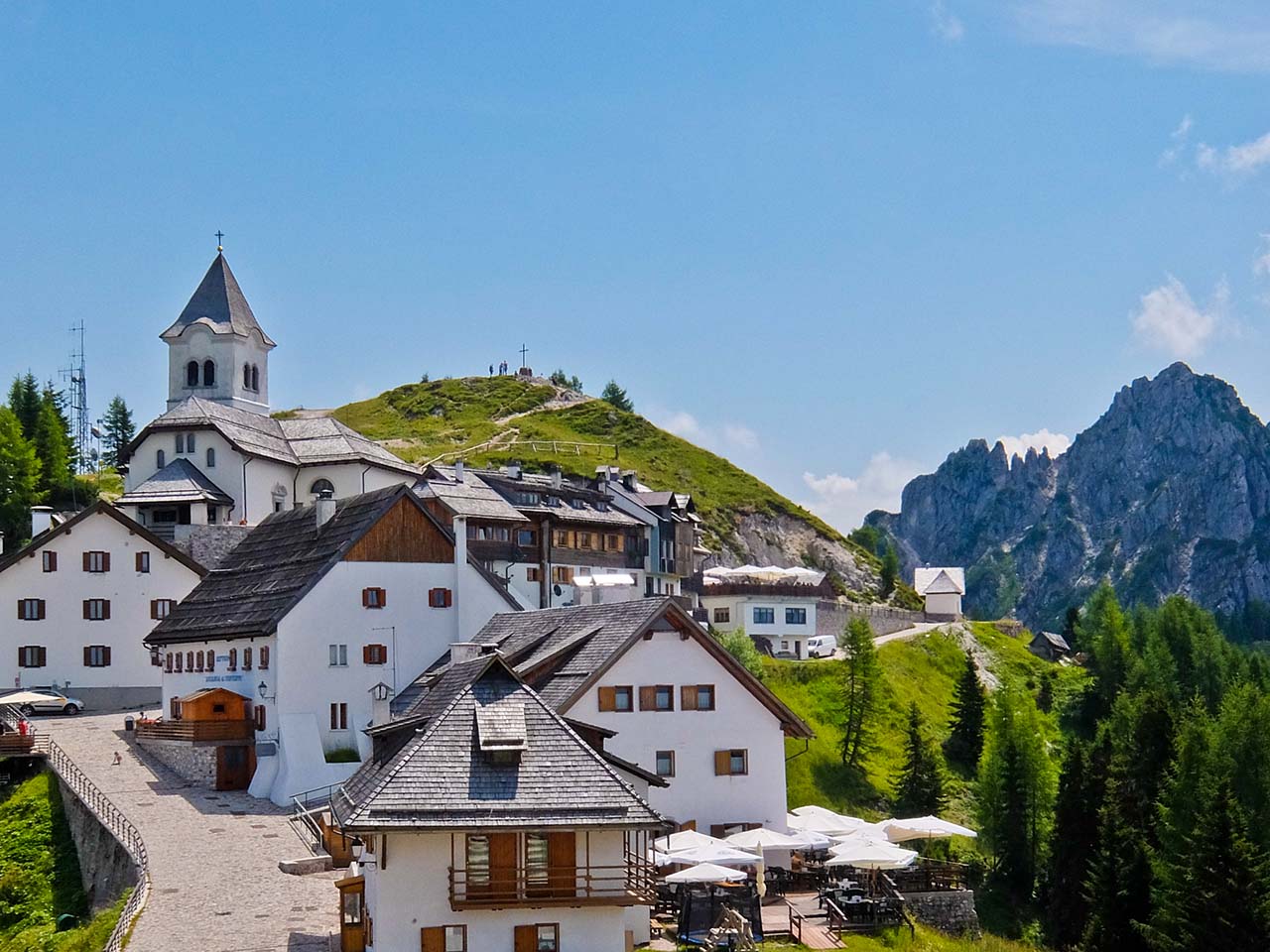
Monte Lussari, Italy (c) Rupert Parker
That’s the end of my time in Austria, a shame since there are a total of 22 stages. Instead I’m whisked to Valbruna in Italy where I tackle Stage 4 of the Circular Route. This a major ski centre and, indeed I could just take the cable car up. Instead I climb gradually on a stony 4×4 track, gaining over 1000m, to the village of Monte Lussari. The chapel here is a major pilgrimage destination as a 14th century shepherd discovered a statue of the Madonna when he was searching for his sheep. Most people just come for lunch and enjoy the spectacular views.
Kranjska Gora, Slovenia
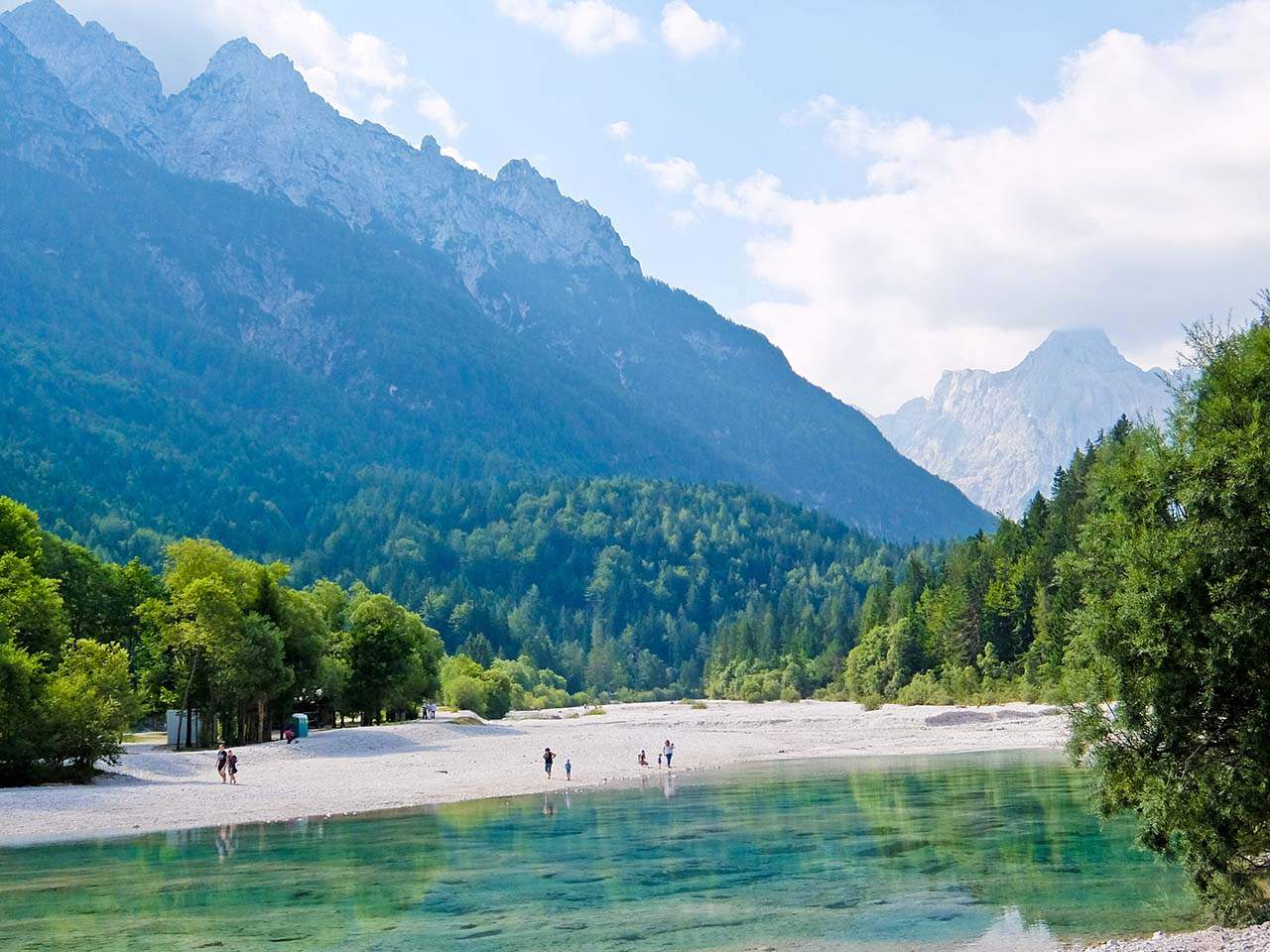
Kranjska Gora, Slovenia (c) Rupert Parker
Next day, I hop over the border into Slovenia and start Stage 23 in Kranjska Gora. It’s Saturday and the town is packed with cyclist and hikers, all keen to get a taste of the Triglav National park, the only one in Slovenia and one of the largest in Europe.
Vršič Pass, Slovenia
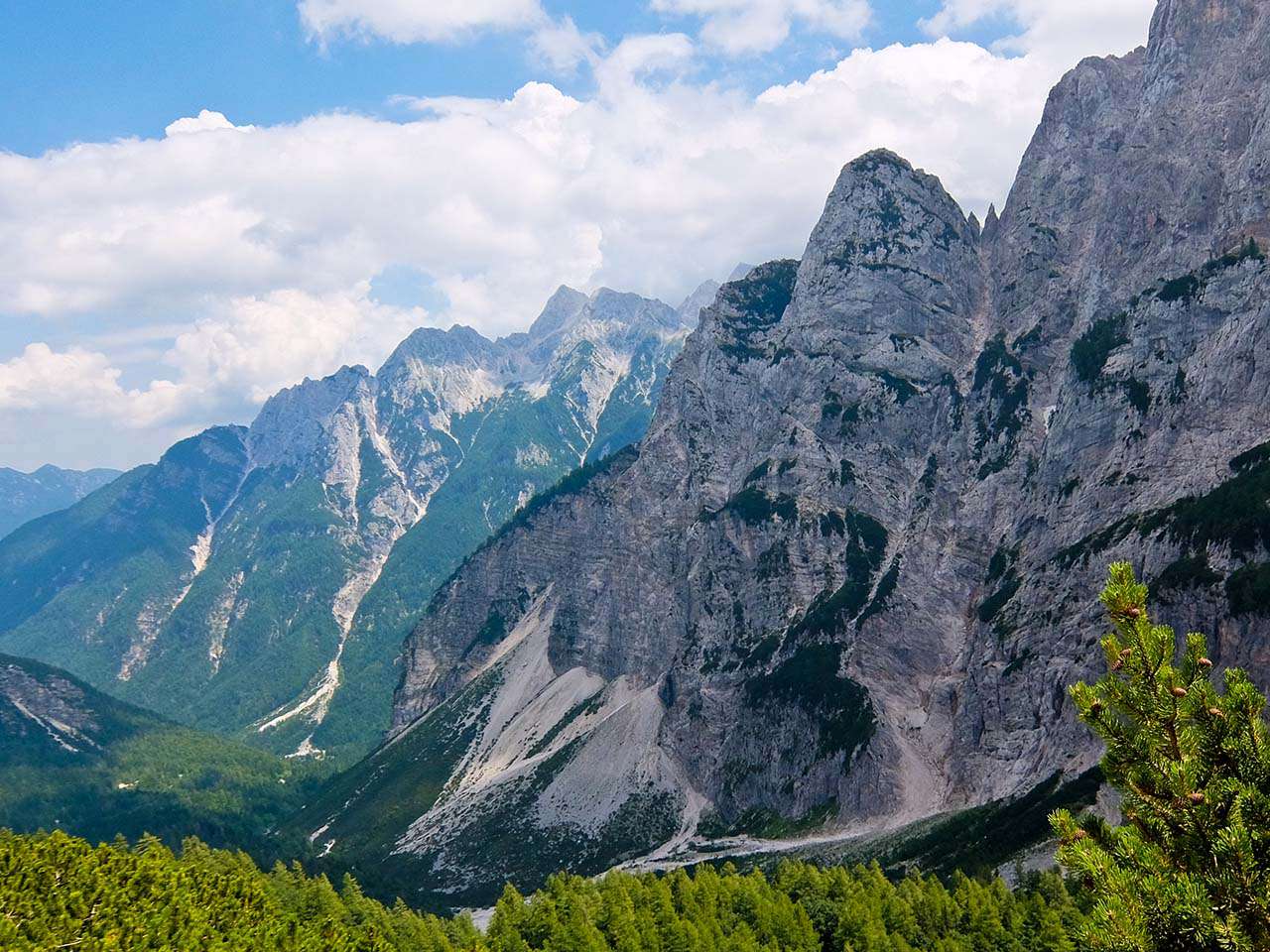
Vršič Pass, Slovenia (c) Rupert Parker
I’m going to be tackling the Vršič Pass, at 1611m the highest pass in the Julian Alps, and the road up to it was built by Russian POW’s during WW1. Many were killed in an avalanche and there’s an Orthodox Chapel halfway up, built in their memory.
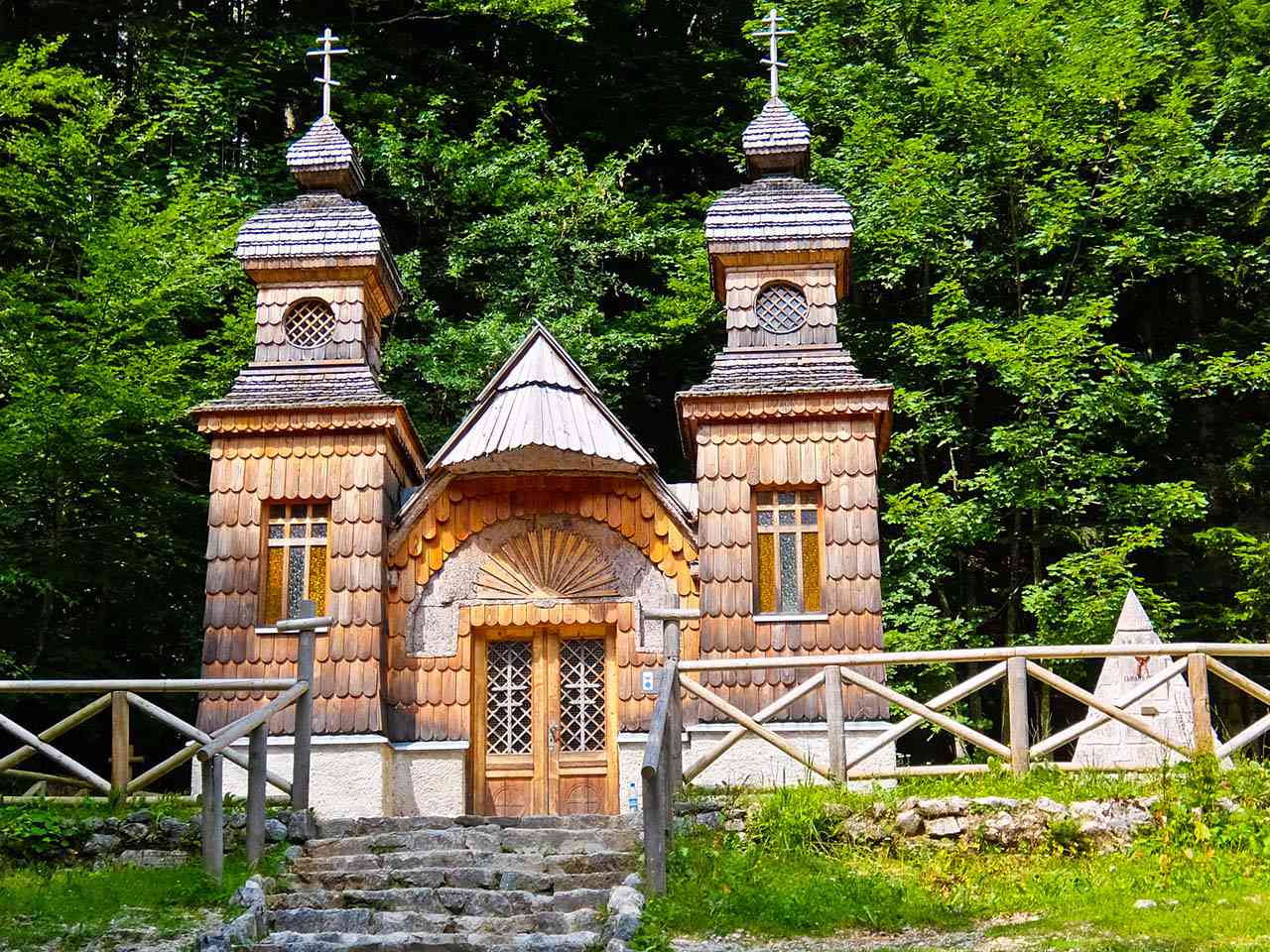
Russian Chapel, Vršič Pass, Slovenia (c) Rupert Parker
The trail criss-crosses the road before reaching the summit of the Vršič at 1688m, still guarded by the remains of gun emplacements. I descend to the pass and eat my sandwiches, watching the day trippers.
Soča Trail, Slovenia
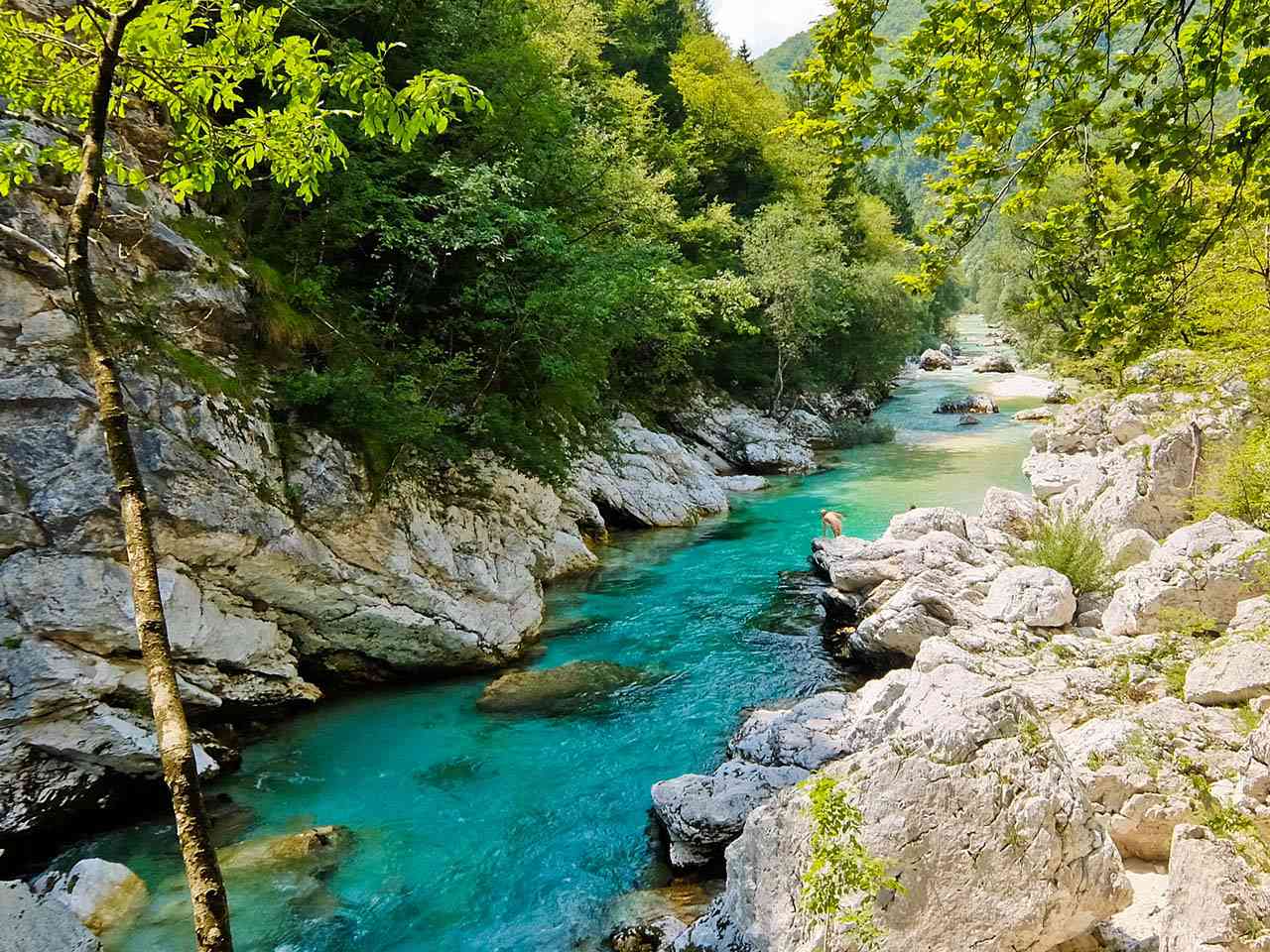
River Soča, Slovenia (c) Rupert Parker
From here it’s all downhill to the River Soča, and I follow it from its source to Trenta which consists of a handful of houses and an information centre. I’m surrounded by mountains including Mt Triglav, at 2864m the Slovenia’s highest peak and I watch the sun set as I munch pizza outside. The Soča trail continues and the emerald blue waters of the river are an effective way to cool off. There’s rafting here and attractive campsites line both sides of the river, as I make my way to the town of Bovec. This was the location of fierce fighting between the Italians and the Austrians during WW1 and they’ve restored a complex of bunkers and trenches on a hill just outside the town.
Brda region, Slovenia
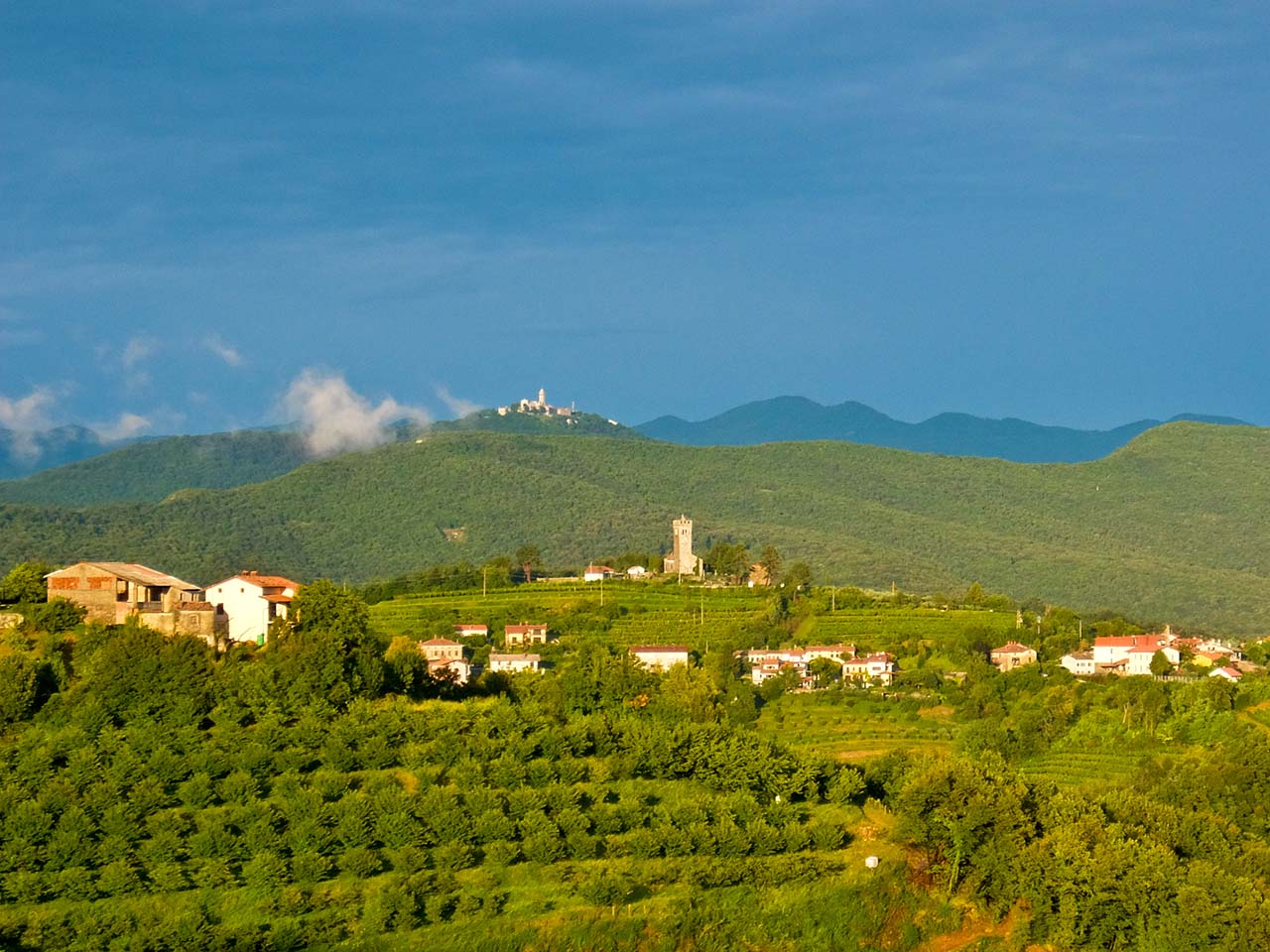
Slovenian Vineyards (c) Rupert Parker
There’s another change of scenery as I’m transferred to the Brda region, Slovenia’s wine centre, all gently rolling hills terraced with vines and topped by church spires. I walk Stage 30, stopping for a wine tasting at the old renaissance castle in Dobrovo, before reaching Šmartno.
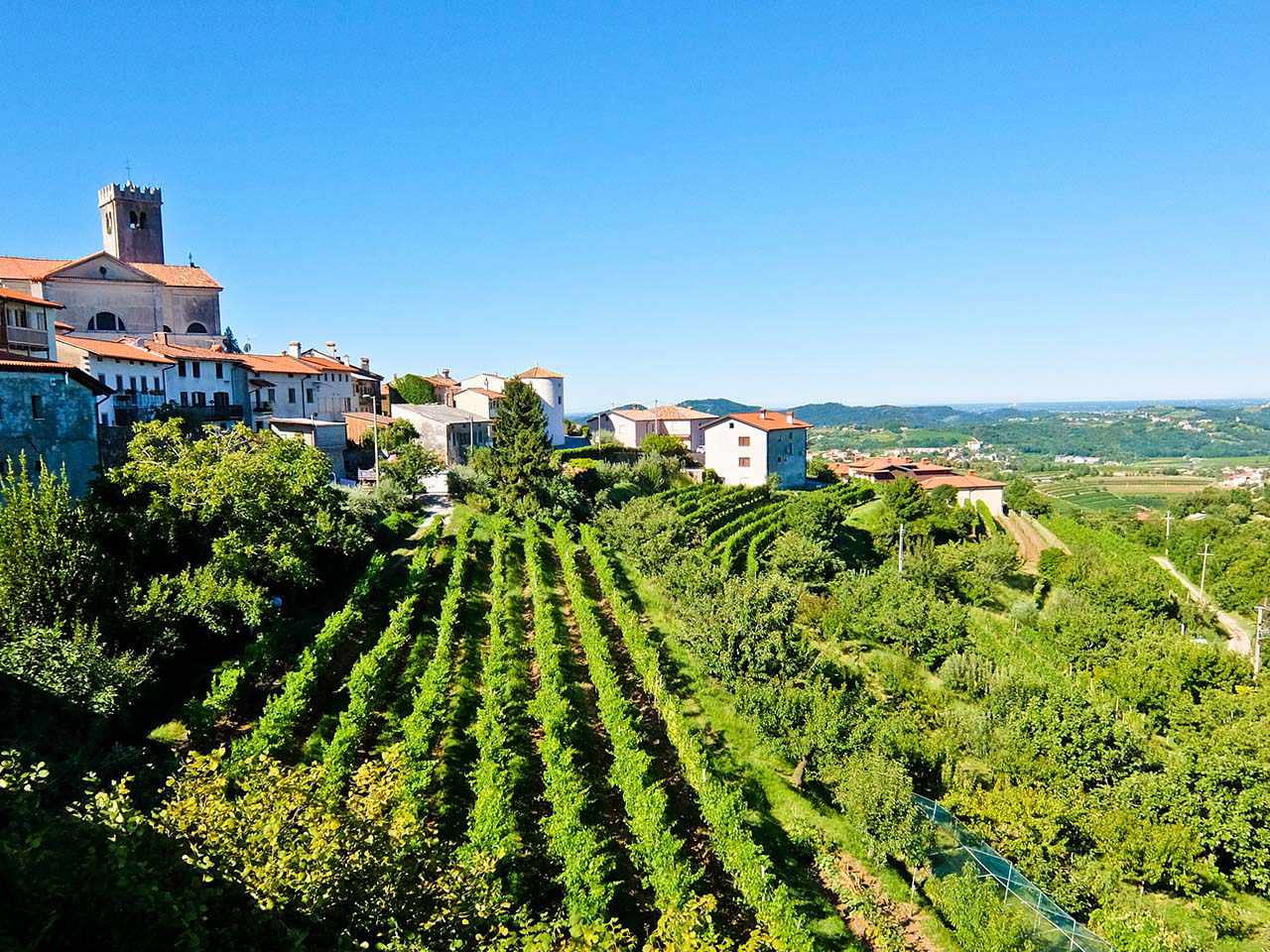
Šmartno, Slovenia (c) Rupert Parker
Its attractive narrow cobbled streets are enclosed by defensive walls and towers but I stay in the Hotel San Martin, just outside. Here I’m treated to a delightful dinner with matching wine pairings and it’s one of the best meals on the trail.
Rilke Path, Italy
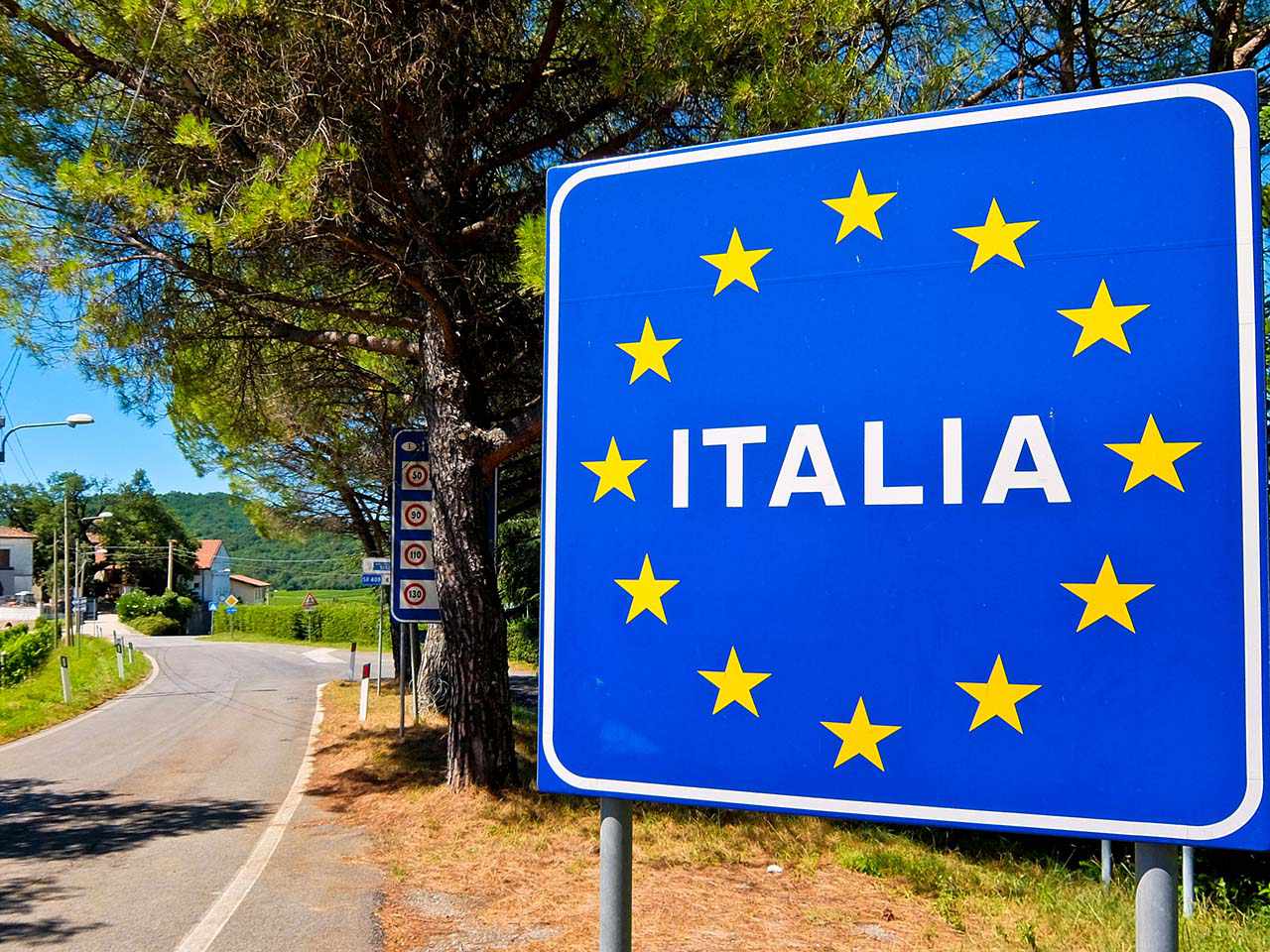
Italy Border (c) Rupert Parker
I carry on Stage 31 and after a few kilometres reach the frontier with Italy. There’s no manned checkpoint, just a couple of signs, and I soon reach the sizeable town of Cormons on the edge of the Fruili plain.
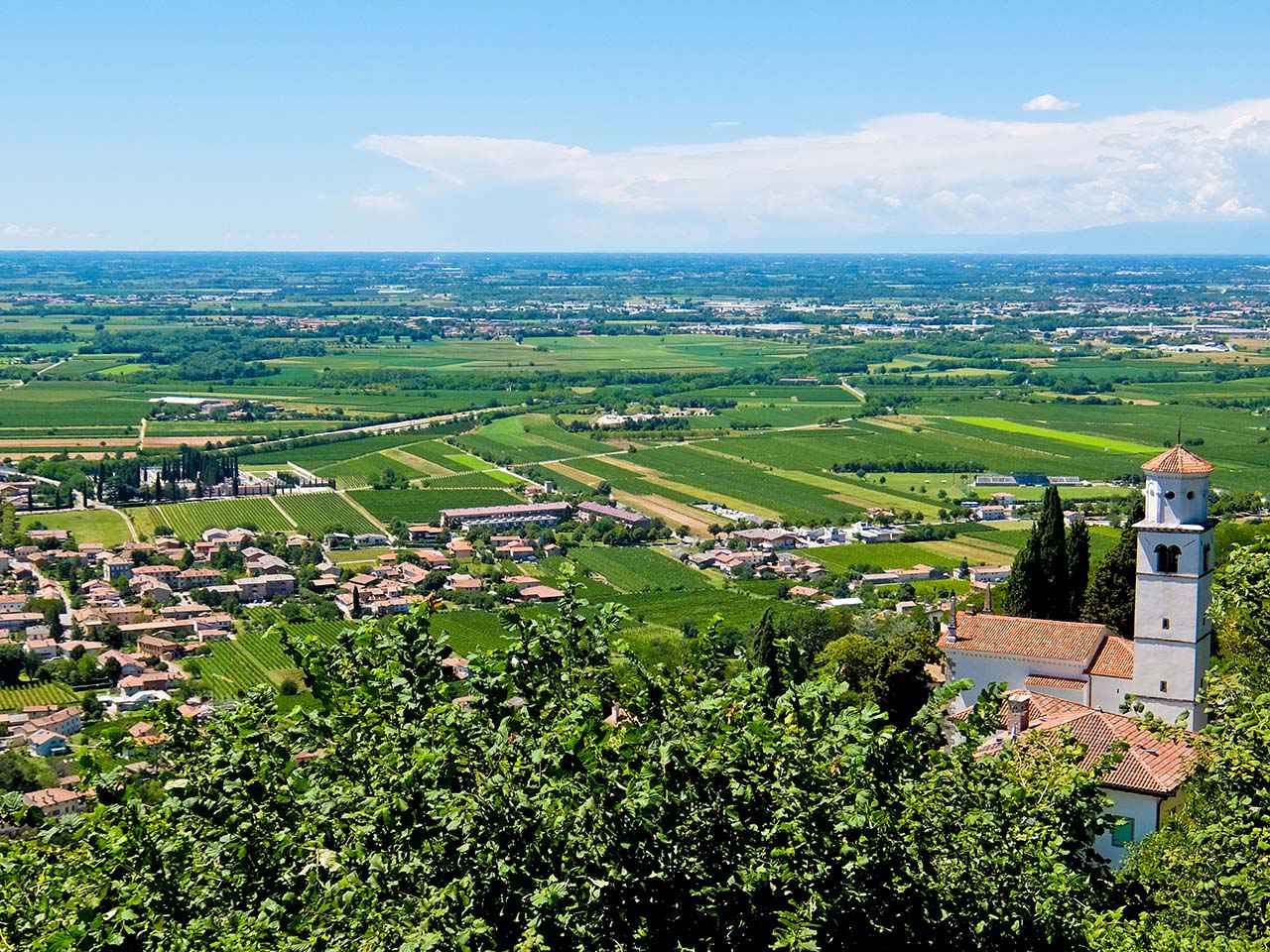
Fruili Plain, Italy (c) Rupert Parker
From here onwards the walking is less interesting as it’s relatively flat. Instead I’m transferred to Sistiana and walk the Rilke Path along the coast to Duino.
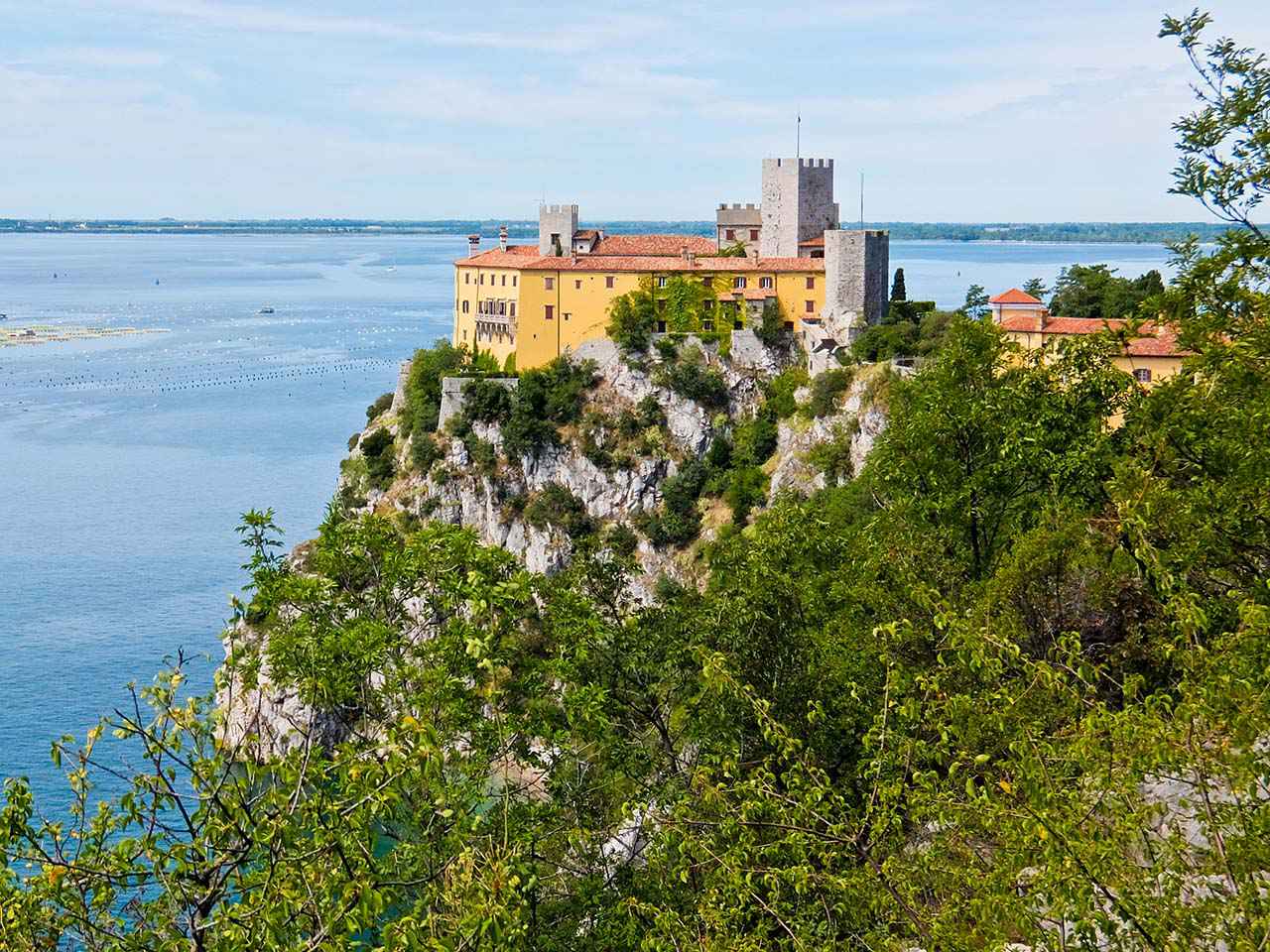
Duino Castle, Italy (c) Rupert Parker
The poet spent time in the castle here, between 1911 and 1912, and was inspired to write his Duino Elegies. As I walk the limestone cliffs with the Adriatic below me, and the castle in the distance, it’s achingly beautiful.
Trieste-Hrpelje narrow gauge railway, Italy
The last leg is part of Stage 36 and starts in the village of Draga Sant’Elia following the course of the old Trieste-Hrpelje narrow gauge railway, through a couple of tunnels. It then dips down to a cluster of houses at Botazzo, once home to a number of water mills, before following the Karst landscape of the Val Rosandra. The stream here supplied water to Trieste in Roman times and there are the remains of an aqueduct just before Bagnoli della Rosandra.
This is the end of my walk, although not quite the last point of the Alpe-Adria Trail. It continues for one more day to the coastal resort of Muggia but it’s mainly on asphalt and not interesting.
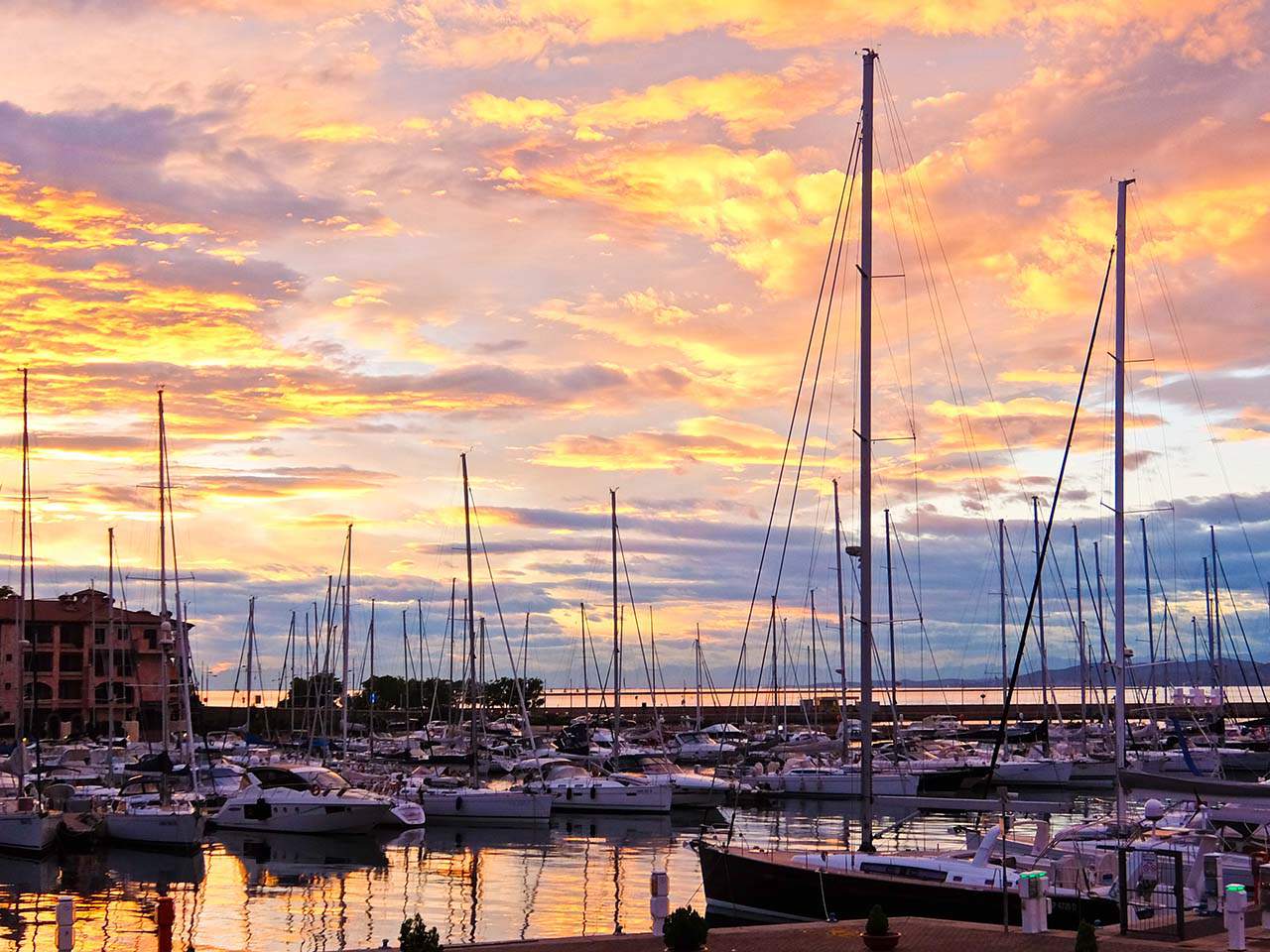
Muggia, Italy (c) Rupert Parker
I take a taxi to the sea and soak my aching feet. At the end of the way, I silently give thanks to the people who’ve been responsible for signing the route. Walking over 750kms affords ample opportunity for getting lost, but my path has been straight and true.
Fact File
The Alpe-Adria Trail – Hiking in the Garden of Eden is a comprehensive online resource and you can download a useful App to help you find your way.
I Feel Slovenia has information about the country.
Carinthia the Joy of Living has information about this part of Austria.
Friuli Venezia Guilia has information about this part of Italy.

EasyJet flies from London Stansted to Ljubljana.
<div data-skyscanner-widget=”FlightSearchWidget” data-locale=”en-GB” data-market=”UK” data-currency=”GBP” data-media-partner-id=”90566″> </div>
<script src=”https://widgets.skyscanner.net/widget-server/js/loader.js” async=””></script>
